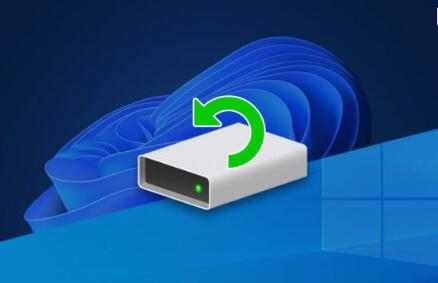Creating a recovery drive is a vital step in maintaining your Windows PC. It allows users to troubleshoot and recover their system in case of failures. However, many users encounter the frustrating error message, “We can’t create a recovery drive on this PC.”
A recovery drive is a USB flash drive that contains tools to help you troubleshoot and repair Windows when it’s not functioning properly. It allows users to reinstall Windows, restore the system, or repair startup issues. Having a recovery drive can save you time and effort, making it an essential tool for any Windows user.
Types of Recovery Drives
USB Recovery Drives: These are the most common and portable, enabling you to create a recovery environment on a flash drive.
System Repair Disks: These are created on optical media (like DVDs) and can be used to access recovery tools.

Common Causes of the Error
Incompatible Hardware: Some hardware configurations may not support recovery drive creation.
Insufficient Disk Space: The USB drive must have adequate free space, typically at least 8GB.
Corrupted System Files: Issues within the operating system can prevent recovery drive creation.
Windows Version and Settings: Specific Windows versions or settings can hinder the process.
Third-Party Software Conflicts: Antivirus or other software may interfere with the creation of recovery media.
Preliminary Checks
Before diving into solutions, perform these preliminary checks to ensure your system is ready for recovery drive creation.
Check System Requirements
Verify that your PC meets the necessary requirements to create a recovery drive, including the appropriate version of Windows and hardware compatibility.
Free Up Disk Space
Make sure the USB drive has enough available space. You can check this by:
Plugging in your USB drive.
Right-clicking on the drive in File Explorer.
Selecting “Properties” to see available space.
If space is low, consider deleting unnecessary files or using a larger USB drive.
Run System File Checker (SFC)
Corrupted system files can lead to errors. To run SFC:
Open Command Prompt as an administrator.
Type sfc /scannow and press Enter.
Wait for the scan to complete and follow any prompts to fix issues.
Update Windows
Ensure your Windows operating system is up to date:
Go to Settings > Update & Security.
Click on “Check for updates.”
Install any pending updates and restart your PC.
Step-by-Step Solutions
Method 1: Using Windows Recovery Environment
Access Windows Recovery Environment:
Restart your PC and press F11 (or the key specific to your manufacturer) to enter recovery mode.
Create Recovery Drive:
From the recovery menu, select “Troubleshoot,” then “Advanced options,” and finally “Recovery Drive.”
Follow the on-screen instructions to create the recovery drive.
Method 2: Checking Disk Management
Access Disk Management:
Right-click on the Start menu and select “Disk Management.”
Check USB Drive Status:
Ensure your USB drive appears and is formatted as FAT32. If not, right-click on it and select “Format,” choosing FAT32.
Retry Recovery Drive Creation:
Once formatted, attempt to create the recovery drive again.
Method 3: Using Command Prompt
Open Command Prompt:
Search for “cmd” in the Start menu, right-click, and select “Run as administrator.”
Check Disk:
Type chkdsk X: /f (replace X with your USB drive letter) and press Enter. This will check for errors on the drive.
Attempt Recovery Drive Creation:
If no errors are found, proceed to create the recovery drive again.
Method 4: Disabling Third-Party Software
Temporarily Disable Antivirus:
Right-click on your antivirus icon in the system tray and choose to disable it.
Try Creating Recovery Drive:
Attempt to create the recovery drive again while the antivirus is disabled.
Advanced Troubleshooting Techniques
Checking for Windows Updates
Open Settings:
Go to Settings > Update & Security.
Check for Updates:
Click “Check for updates” and install any available updates.
Restart Your PC:
Restart your computer and try creating the recovery drive again.
Clean Boot
A clean boot can help identify if background services are causing the issue.
Open System Configuration:
Type msconfig in the Start menu search and hit Enter.
Select Selective Startup:
In the General tab, select “Selective startup” and uncheck “Load startup items.”
Disable Services:
Go to the Services tab, check “Hide all Microsoft services,” then click “Disable all.”
Restart Your PC:
Restart and try creating the recovery drive again.
Creating Recovery Media with Third-Party Software
If the built-in methods fail, consider using third-party software:
Research Reliable Tools:
Look for software like Rufus or Panda Assistant Todo Backup.
Download and Install:
Follow installation instructions, and then use the software to create recovery media.
When to Seek Professional Help
If you’ve tried all the above methods and still cannot create a recovery drive, it may be time to consult a professional. Signs that professional help is needed include persistent error messages, inability to access Windows, or hardware malfunctions.
About us and this blog
Panda Assistant is built on the latest data recovery algorithms, ensuring that no file is too damaged, too lost, or too corrupted to be recovered.
Request a free quote
We believe that data recovery shouldn’t be a daunting task. That’s why we’ve designed Panda Assistant to be as easy to use as it is powerful. With a few clicks, you can initiate a scan, preview recoverable files, and restore your data all within a matter of minutes.
Subscribe to our newsletter!
More from our blog
See all postsRecent Posts
- Retrieve files from usb 2025-07-04
- How to retrieve overwritten excel file 2025-07-04
- How to retrieve lost files on sd card 2025-07-04

 Try lt Free
Try lt Free Recovery success rate of up to
Recovery success rate of up to









